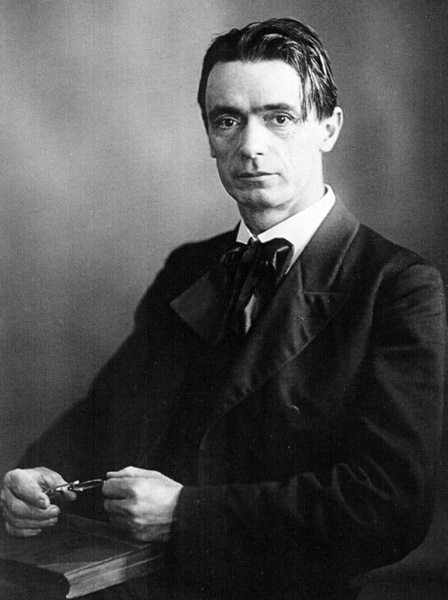Origins and History
Rudolf Steiner

Rudolf Steiner was born in 1861 in Austria. Although today he is most well-known for his work in the field of education through the Waldorf Schools, this work did not occur until nearly the end of his life. He was best known during his own lifetime as a philosopher, and also dealt with the fields of agriculture, literature, architecture, and sculpture.
As a child he was felt very isolated from his peers, because he was the only one who could see what he later called a “supersensible world” which existed along-side our own. Much of the rest of his life was dedicated to exploring and explaining this world, and helping others to follow him. In school he studied the basic sciences of his time (mathematics, chemistry, physics, zoology, botany, geology, and mineralogy) and studied the classics (languages, literature, philosophy, history, and art) on his own. He was granted a Doctorate in Philosophy for his work Truth and Science.
In 1913, Steiner became the head of the Anthroposophical Society, which had been founded in response to one of his lectures and named after his philosophy. The unifying principle of this society, and one of the main tenants of anthroposophy was “a striving for the knowledge of the Spirit in man and in the universe.” For all that this sounds like a religious goal, anthroposophy was open to all faiths, and had no actually doctrine.
After the end of World War I, Steiner began developing his ideas for a new world order that would prevent such a cataclysm from reoccurring. He thought that society should be reorganized into three spheres of responsibilities: spiritual, economic, and rights. This corresponds roughly to the ideals of the French Revolution: liberté, egalité, fraternité (liberty, equality, brotherhood). There should be spiritual liberty (everyone has the right and ability to discover the spiritual world and their own spirituality in their own way), equality of rights (regardless of race, gender, religion, or class), and economic brotherhood (the acknowledgement that we are equal shareholders in the Earth, and will all share a similar economic fate). This is the sort of world he sought to create with his lectures and nature of the Waldorf School.
Waldorf Schools

One of the people who became interested in Steiner’s philosophy and ideas was Emil Molt, who was the director of the Waldorf-Astoria cigarette factory in Stuttgart, Germany. In 1919, he asked Steiner to build and direct a school for the children of his factory workers. (Molt had already created a school for the workers themselves, believing that education made them better workers and better people.) This original school is shown in the picture on the left. The teachers, and eventually the students, for this school came from all backgrounds and classes. During Steiner’s lifetime, only three other schools were founded. Because the schools promoted individualism, all those that fell under the control of Nazi Germany were closed. They were reopened, however, after the end of World War II. The Association of Waldorf Schools of North America was founded in 1968 to facilitate the creation and collaboration of Waldorf schools. There are currently over 900 Waldorf schools in 83 differnt countries, although they go by various names.
